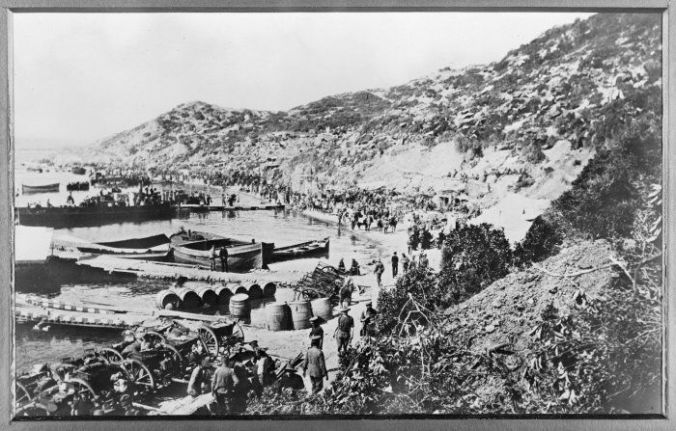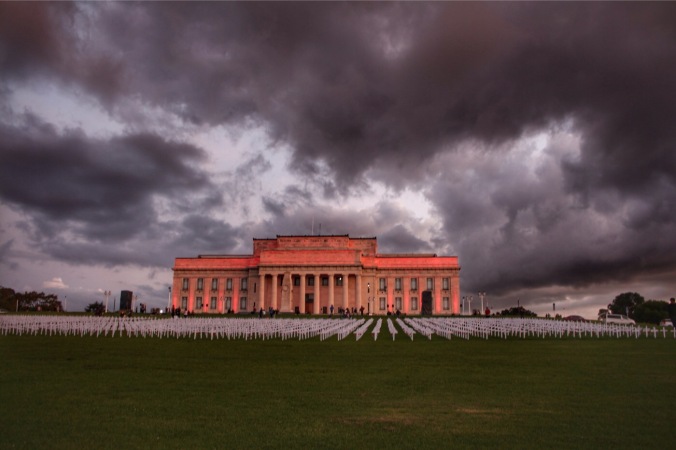
All it takes is a change of focus to see what lies beyond us. Raindrops on Loropetalum chinense (chinese fringe flower) leaves. Image: Su Leslie, 2017
I woke this morning to find the world beyond my street has disappeared.
A mist has rolled across the harbour and made an island of this, slightly elevated, piece of land I call home. Beyond the neighbours’ roofs, a stand of macrocarpa trees fades softly into a flat, grey void.
The still air carries the sound of motorway traffic in the distance, but like shapes in the mist, the sound is muffled and indistinct — a mere hint of life beyond this temporary island.
For this time I am alone; the drivers, dog-walkers, joggers and cyclists either still at home or invisible to me.
For this time I can enjoy the quiet and solitude, the safety and peace, of my island. Soon it will be gone; evaporated by the climbing sun. Once again I will be part of a bigger, messier, noisier whole.
I can’t ponder this without thinking of John Donne, and THAT poem:
No man is an island,
Entire of itself,
Every man is a piece of the continent,
A part of the main.
If a clod be washed away by the sea,
Europe is the less.
As well as if a promontory were.
As well as if a manor of thy friend’s
Or of thine own were:
Any man’s death diminishes me,
Because I am involved in mankind,
And therefore never send to know for whom the bell tolls;
It tolls for thee.
MEDITATION XVII
Devotions upon Emergent Occasions
John Donne
I imagine all over the world right now, good people are reading and quoting this rebuke of isolationism, even as the sound of guns being cocked and drawbridges being pulled up echo through the mist.
For those of us who have a safe place — a home, a friendly neighbourhood, a peaceful country — it is tempting to build a fence, patrol the boundaries, create rules for entry. It is tempting to hold on to what we have and create a mist to obscure that which is beyond.
It is tempting to zoom in and focus on what is near. But however blurred by our lens, there is always a background in shot which must share our attention too.
Written for Sally D’s Mobile Photography Challenge at Lens and Pens by Sally.











